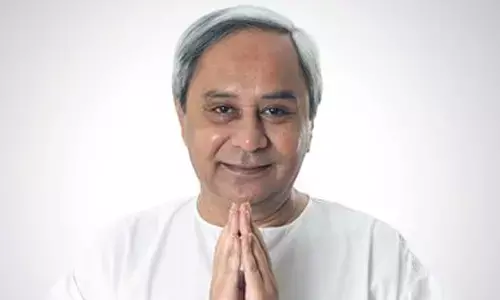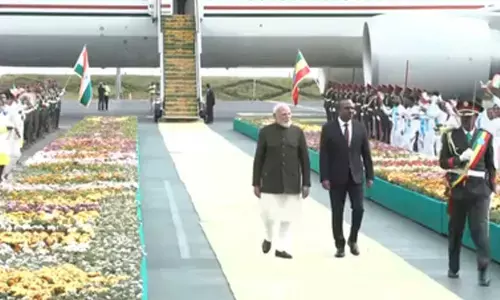When dance defines the self

When Dance Defines The Self, Choreographic Presentation, Bharatanatyam. Five dancers come together with a choreographic presentation inspired by the teaching of Jiddu Krishnamurti, the spiritual and philosophical thinker to enthrall the audience and show better aspects of living.
Five dancers come together with a choreographic presentation inspired by the teaching of Jiddu Krishnamurti, the spiritual and philosophical thinker to enthrall the audience and show better aspects of living.
We often tend to go for meditation to get relieved of our stress; but does chanting same mantras and following the same methods give us a better spiritual understanding of life it just becomes a mechanical process of the brain. In quest of an answer and to define life, five Indian classical dancers from different schools of practice staged a beautiful choreographic presentation titled ‘Essence of Life’ as part of Hydourite’ , the 100 days cultural celebration of our city, this weekend at Taj Vivanta.
The three pieces performance was an amalgamation of five different dance forms d by Smitha Madhav (Bharatanatyam), Prateeksha Kashi (Kuchipudi), Achuta Manasa (Kathak), Rashmi Menon (Mohiniattam), Masako Ono (Odissi). The essence of the presentation was to establish the very fact; ‘happiness is lying within us, we have to define from our soul’.
The performance started with introduction to meditation by Smitha as part of ‘The art of Meditation’ section. While her piece was based on the introduction to meditation, Masako focused on the myths of meditation. With the graceful mudras of Kuchipudi as Prateeksha showed how silent awareness leads human beings to meditation, Rashmi and Manasa asserted how true meditation transforms our mind that never comes from religious practice but through self refinement; with their respective forms Mohiniyattam and Kathak.
The central section of the presentation was based on five ways that can give us extreme joy of life; by understanding our mind, by freeing ourselves from fear and problems, by bringing a change within us to see the joy around us and most importantly by being compassionate with the beauty of love.
The concluding piece titled ‘Freedom from the self’ was a Thillana where all the dancers came together to make a bridge between spirituality and the essence of life through their performance. It was indeed a unique experience for the viewers as it must have been for all the artistes - dancers, singers, music composer B Arunasivaramakrishna, film director Seetha Rathnakar and everyone else involved in the project. Since all classical dance compositions are mainly based on mythological episodes sometimes with modern interpretation, it was a viewers delight and visual treat with a refreshing change on subject matter. At the same time, it was a challenging task for all dancers and choreographers to execute the theme by maintaining their respective forms communicate well with common people. Though the dance performance was impressive enough to hold the attention of audience, after a certain level, it was almost the repetition and exaggeration of thought that could have been avoided. It was not expected from the dancers to flaunt their hand gesture without decorating their fingers and palm with ‘Alta’. The visible half leggings of Smitha while performing ‘Freedom from fear’ and highlighted heart shaped dress of Achuta were odd enough to be considered as visual glitch. These avoidable mistakes stop us to call the performance a perfect presentation.
















